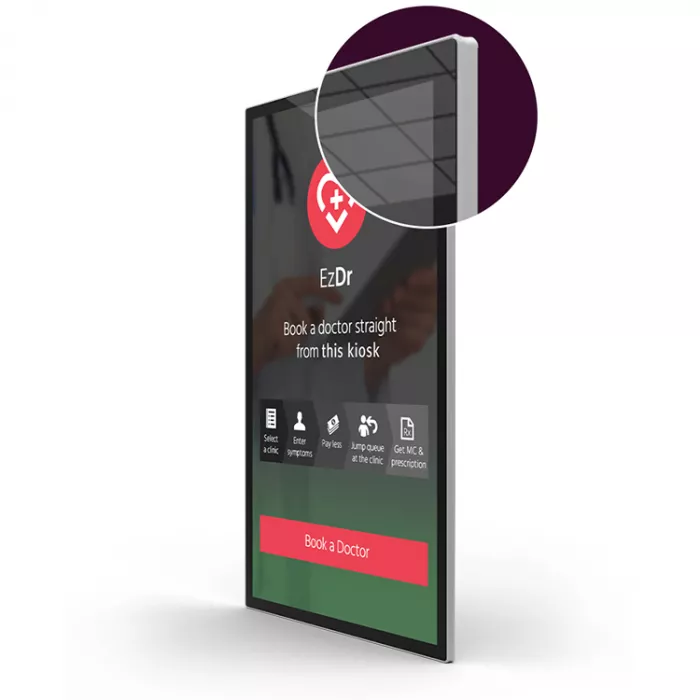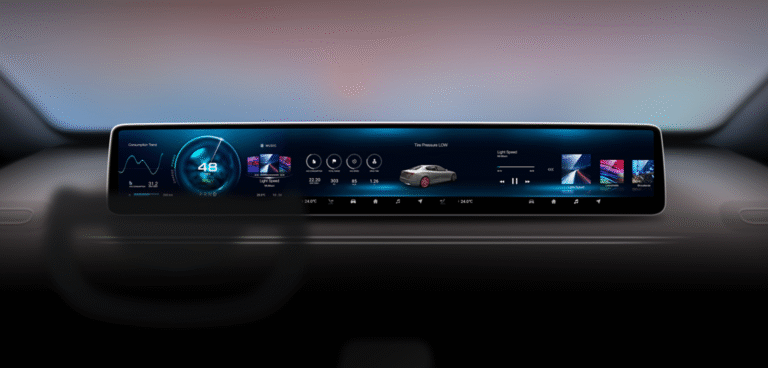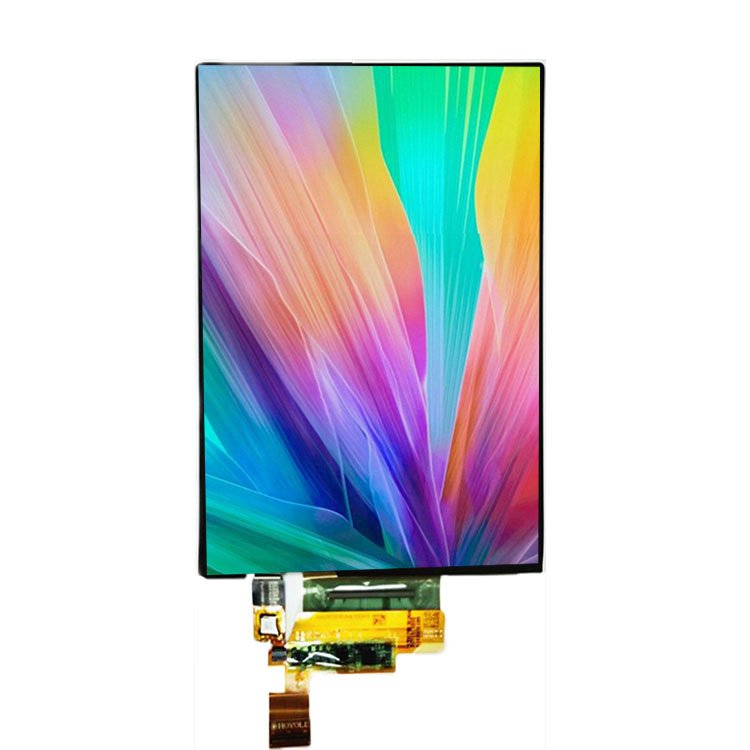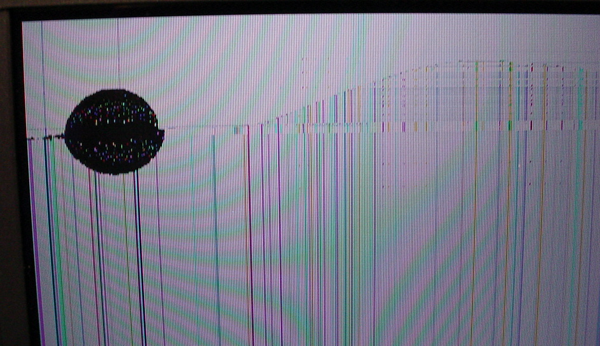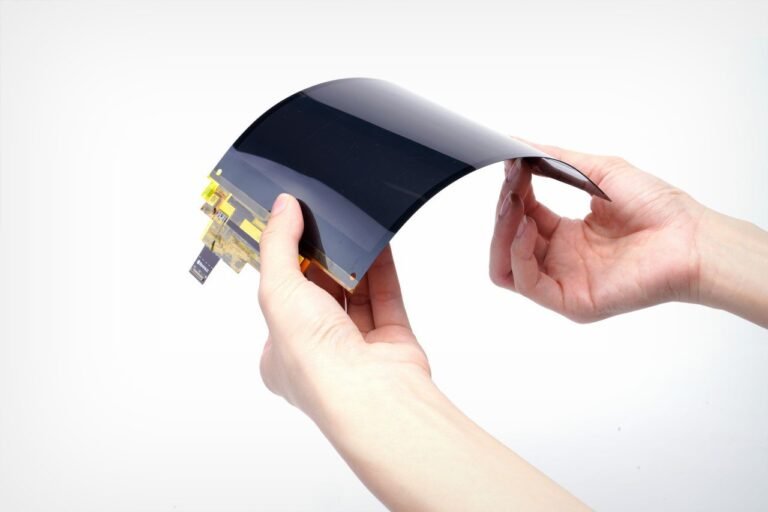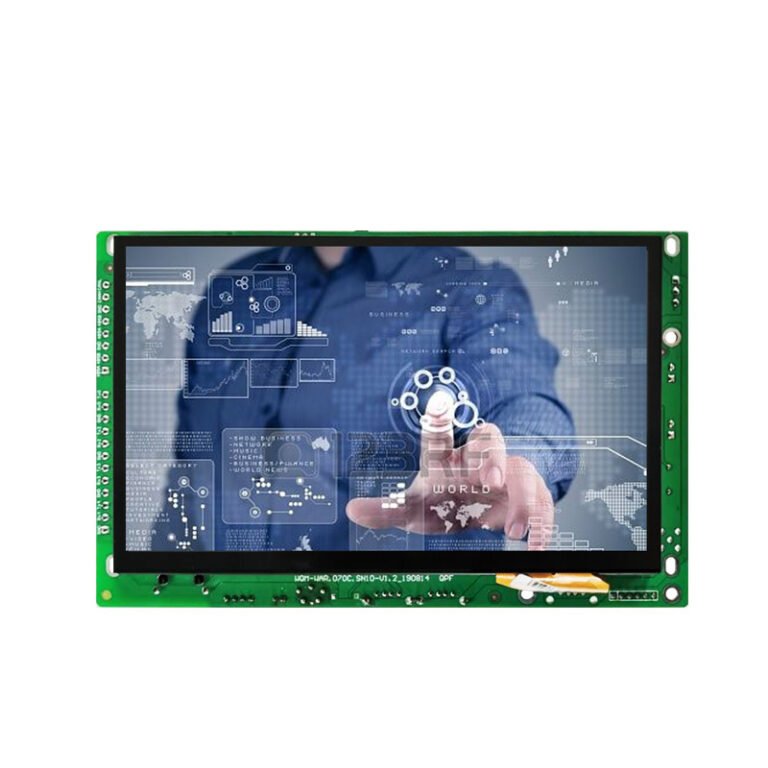1. Was ist TFT LCD?
TFT LCD (Dünnschichttransistor-Flüssigkristallanzeige) ist eine Unterart der LCD-Technologie, die zum Industriestandard in der Konsum- und Industrielektronik geworden ist. Sie nutzt eine Aktivmatrix aus Dünnschichttransistoren, um die Bildqualität und Reaktionszeiten zu verbessern. Beim allgemeinen Vergleich von TFT vs. LCD sollte man beachten, dass TFT eine fortschrittlichere Version von Standard-Passivmatrix-LCDs ist.
KWichtige Vorteile:
- Scharfe Bilder und schnelle Reaktionszeiten
- Erschwinglich und weit verbreitet
- Energieeffizient in vielen Anwendungen
Einschränkungen:
- Begrenzte Betrachtungswinkel – Farben verschieben sich bei Betrachtung von der Seite
- Geringerer Kontrast in dunklen Szenen aufgrund der Abhängigkeit von der Hintergrundbeleuchtung
Häufige Anwendungen:
- Smartphones
- Fernseher
- Industrie-Monitore
- Fahrzeug-Armaturenbrett-Displays
Ein umfassender Vergleich der LCD-Panel-Typen: TN, VA und IPS
2. Was ist OLED?
OLED (Organische Lichtemittierende Diode) ist eine Displaytechnologie, die sich von LCDs dadurch unterscheidet, dass sie keine Hintergrundbeleuchtung benötigt. Jeder Pixel emittiert sein eigenes Licht, was eine unglaubliche Bildqualität und schlanke Bauformen ermöglicht. Beim Vergleich von TFT vs. OLED schneidet OLED oft in der visuellen Leistung besser ab, kostet aber mehr.
Wichtige Vorteile:
- Echte Schwarztöne – Pixel können sich komplett abschalten
- Außergewöhnlicher Kontrast und Farbgenauigkeit
- Weite Betrachtungswinkel ohne Farbverschiebung
- Ultradünnes Design
Einschränkungen:
- Höhere Herstellungskosten
- Risiko von Einbrenneffekten bei statischen Inhalten über längere Zeit
Häufige Anwendungen:
- High-End-Smartphones
- Premium-Fernseher
- Tragbare Geräte
- AR/VR-Displays
Tausende von Produkten sind in unserem Katalog verfügbar.
Entdecken Sie unsere breite Produktpalette, darunter LCD-TFTs, grafische und alphanumerische OLED-Displays, LCMs, E-Paper-Displays, Barcode-Scanner (eingebettet, handgehalten, fest montiert), Industriemonitore, Industriecomputer (Trägerplatinen, COMs & SOMs, eingebettete Systeme, HMI-Panel-Computer, SBCs), kapazitive und resistive Touchscreens sowie Zubehör (Entwicklungskits, Anschlüsse, Controller, FPC/FFC-Bänder, ZIF-Anschlüsse).
3. Was ist LED (LED-hintergrundbeleuchtetes LCD)?
Oft missverstanden bezieht sich "LED" in den meisten Kontexten auf LED-hintergrundbeleuchtete LCDs. Diese Displays integrieren LED-Lichter als Hintergrundbeleuchtungsquelle hinter einer standard LCD-Matrix. In Diskussionen über TFT vs. OLED vs. LCD fällt LED normalerweise unter die LCD-Kategorie, jedoch mit verbesserter Helligkeit.
Wichtige Vorteile:
- Helliger als ältere CCFL-hintergrundbeleuchtete LCDs
- Dünner und energieeffizienter
- Kostengünstig mit anständiger Leistung
Einschränkungen:
- Immer noch abhängig von Hintergrundbeleuchtung, was zu weniger tiefen Schwarztönen führt
- Farbgenauigkeit und Kontrast variieren je nach Panelqualität
Häufige Anwendungen:
- Budget-Fernseher
- Computermonitore
- Digitale Beschilderung
- Laptops
| Merkmal | TFT-LCD | OLED | LED (Hintergrundbeleuchtetes LCD) |
|---|---|---|---|
| Bildqualität | Mäßiger Kontrast, gute Farben | Hoher Kontrast, echte Schwarztöne | Helle, mäßige Kontraste |
| Helligkeit | Gut, abhängig von Hintergrundbeleuchtung | Ausgezeichnet, selbstleuchtende Pixel | Sehr hell, aufgrund von LED-Hintergrundbeleuchtung |
| Betrachtungswinkel | Begrenzt, Farbverschiebungen bei schrägem Blickwinkel | Weit, keine Farbverzerrung | Besser als TFT, geringer als OLED |
| Dicke | Dicker, benötigt Hintergrundbeleuchtung | Sehr dünn, keine Hintergrundbeleuchtung erforderlich | Dünn, hängt von der Hintergrundbeleuchtungskonfiguration ab |
| Kosten | Erschwinglich | Teuer | Budgetfreundlich |
| Energieeffizienz | Mäßig | Hocheffizient | Effizient, aber geringer als OLED |
| Anwendungen | Smart-Geräte, Monitore, Medizintechnik | Telefone, Fernseher, Wearables | Fernseher, Monitore, Digitale Beschilderung |
Fazit: Was sollten Sie wählen – TFT vs. OLED vs. LCD?
Beim breiteren Vergleich von TFT LCD vs. LCD (einschließlich OLED- und LED-hintergrundbeleuchteter Typen) hängt die beste Wahl von Ihren Prioritäten ab:
- Wählen Sie TFT LCD für eine Balance aus Erschwinglichkeit und Leistung, insbesondere für Industriedisplays oder Geräte mit häufiger Nutzung.
- Entscheiden Sie sich für OLED wenn überlegener Kontrast, perfekte Schwarztöne und elegantes Design wichtiger sind als die Kosten.
- Entscheiden Sie sich für LED-hinterleuchtete LCDs wenn hohe Helligkeit und Energieeffizienz zu einem Budgetpreis erforderlich sind.
Letztendlich hilft das Verständnis der Vor- und Nachteile von TFT vs. OLED vs. LCD dabei, intelligentere Produktentwicklungs- oder Kaufentscheidungen zu treffen.
FAQ: Häufig gestellte Fragen zu TFT vs. OLED vs. LCD
F1: Ist OLED besser als LCD?
A: Ja, insbesondere bei der Bildqualität. OLED bietet tiefere Schwarztöne und besseren Kontrast. Allerdings sind TFT-LCDs für bestimmte Anwendungen kostengünstiger und langlebiger.
F2: Ist LED dasselbe wie OLED?
A: Nein. LED bezieht sich typischerweise auf einen LCD-Bildschirm mit LED-Hintergrundbeleuchtung, während OLED eine selbstleuchtende Pixeltechnologie ist.
F3: Warum neigen OLEDs zu Einbrenneffekten?
A: OLED-Pixel können degradieren, wenn statische Bilder zu lange angezeigt werden. Moderne Geräte implementieren Funktionen, um dieses Problem zu mildern.
F4: Können TFT-LCDs die Bildqualität von OLED erreichen?
A: Nicht ganz. IPS-basierte TFT-LCDs haben sich erheblich verbessert, aber OLED liegt immer noch in der visuellen Leistung vorn.
F5: Welcher Bildschirm eignet sich am besten für den Außenbereich?
A: LED-hinterleuchtete LCDs bieten in der Regel überlegene Helligkeit, was sie ideal für Außenumgebungen macht.
Referenzquellen:



